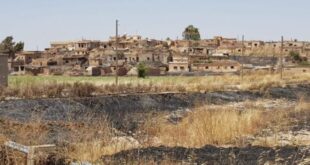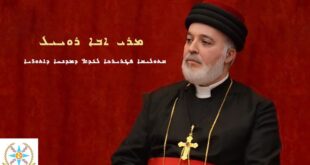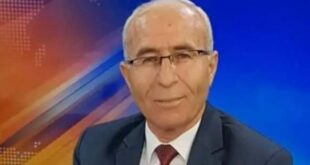The genocide of Assyrians in Ottoman Turkey remains one of the darker pages in contemporary accounts of the Armenian Genocide of 1915. Despite the fact that Assyrian Christians were exterminated alongside Armenians, the world hears much less of the Assyrian factor. Some commentators even state that Ottoman Greeks and Kurds were also massacred in large numbers in 1915-16, though their massacres were more area-specific and were to be continued after the extermination of Armenian and Assyrians.
Ara Sarafian was the guest speaker to the Assyrian Academic Community of Chicago (29 October 2005) where he examined the 1916 British Parliamentary Blue Book, The Treatment of Armenians in the Ottoman Empire 1915-16. This book has come into prominence in recent years because of the ongoing denial of the Armenian Genocide by Turkish authorities, and the allegation that the 1916 report was a forgery. The Gomidas Institute has published two editions of the Blue Book, and publicly opposes the Turkish position.
“Despite the name of that work” Sarafian explained, “the 1916 blue book also reflected the experience of Assyrian Christians who were massacred in 1915.” There is a whole chapter about the treatment of Assyrians by Turkish and Kurdish forces in Persia, and Assyrians are mentioned in passing elsewhere. Sarafian went on to discuss, based on his research, why Assyrians were not mentioned in the title of the Blue Book, and why Assyrians tended to be “understated” though not entirely ignored. The main reasons were the following:
1. Most of the key informants the British had when compiling the parliamentary blue book were United States Consuls (who were in communication to the outside world) and United States missionaries in the interior of Ottoman Turkey. Since there were no US consulates in areas with high concentrations of Assyrians (Diyarbekir, Mosul and Hakiari), and since American missionaries in these areas were expelled in the early stages of the genocidal process (e.g. from Mardin and Diyarbekir), there was a distinct lack of critical information about Assyrians from these ‘core’ areas.
2. Outside the main Assyrian inhabited areas, Assyrian Christians were vastly outnumbered by Armenian Christians and were as a consequence lumped alongside Armenians in descriptions of the genocidal process.
The fact that many Armenian academic and political activists have avoided to engage the Assyrian issue over the years, the fate of Assyrians (and Greeks) have not been redressed in our understanding of the genocides of 1915. However, not all Armenian academics deny the genocide of Assyrians. One recent excellent publication reflecting the Assyrian experience was published in a special edition of Revue d’histoire Arm?nienne contemporaine, “Mardin 1915: Anatomie pathologique d’une destruction” (Paris, 2002). According to Sarafian, the way to engage the Assyrian issue in a constructive way today is through scholarship. “That has to be the bedrock of our understanding” he added.
The ensuing discussion focused on various academic strategies for modern Assyrians to record and integrate their experience into mainstream academic debates. Sarafian stated that the Gomidas Institute could start an Assyrian publications series in the English language if there was serious interest. Others discussed the possibilities of cultivating new specialists and soliciting scholarly articles. “At the end of the day,” Sarafian concluded, “the Assyrian experience is part of a broader common history, in the same mosaic of peoples in the region.”
The Armenian Community (UK)
Garod House
42 Blythe Rd.
London W14 0HA
Contact Person: Roland Mnatsakanyan
The Gomidas Institute is an independent academic organisation dedicated to modern Armenian history. For more information about the Institute please contact info@gomidas.org.
 Assyrian Democratic Organization ADO
Assyrian Democratic Organization ADO






